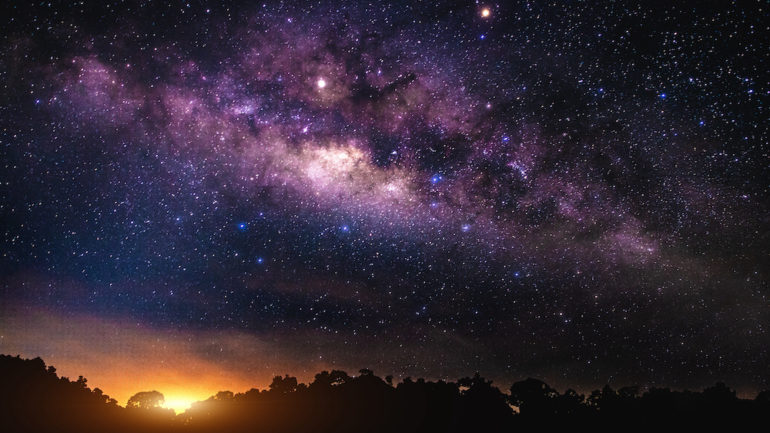Working remotely has allowed some homeowners to leave city life behind and move to the quiet country. One of the many delights of country living is the number of stars you can see at night away from city light pollution. Here’s a primer on the awe and wonder of the country night sky.
Why do you see so many stars in the country?
In the country, the stars and planets look like diamonds flung across a velvet cloth. City skies look very different. The reason is light pollution from homes, businesses, traffic signals and cars. These lights combine to wash out the stars. Depending on the ambient light in your city, you may be able to see only the moon, a few of the brightest stars and the brightest planets.
Our grand Milky Way of stars
One of the sky’s most impressive sights, which many millions of people never see, is the Milky Way Galaxy. We inhabit one of the galaxy’s spiral arms, along with billions of stars and massive clouds of dust. As a result, in areas away from city lights, you can see a band of diffused light spanning the night sky from northeast to southwest like a spectacular white smear.
Legendary figures in the sky
It’s also easier to see constellations in the country night sky. Constellations are patterns of stars that seem to form familiar shapes. Some are named for their shapes and many others bear the name of mythological figures. For example, Sagittarius, which means “the Archer,” gets its name because its stars resemble a warrior with a bow and arrow. The visible constellations change with the seasons as the earth completes its circle of the sun. So, in summer, Scorpius (the Scorpion) presents itself along the southern horizon, and in fall, Orion the Hunter appears in the east and rotates overnight to the west. And the constellations you can see in Earth’s northern and southern hemispheres differ.
Our neighboring planets
Away from light pollution, you can see planets in our solar system. Venus resembles a bright star and is visible just above the eastern or western horizon. Jupiter is often very bright and is higher in the sky. Mars is bright and has a reddish tint, which gives the Red Planet its nickname.
How about some fireworks?
Over the course of the year, the earth passes through areas of space debris left behind by passing comets. Dust and rock get drawn into the earth’s atmosphere and burn up as they fall, creating bright white or green streaks across the sky. As a result, almost every month has a different meteor shower, which you can plan to watch using this calendar.
Out-of-this-world apps
You can use some fun phone apps — NASA’s Night Sky, Star Chart, SkySafari and SkyView, for example — to aid your stargazing. Point your phone’s camera toward a star and your app will identify it and outline the constellation in which it resides. Apps can also help you spot planets in the sky, and some will identify when the International Space Station is about to pass over. With some apps, you can point your phone at the ground and learn where stars and constellations are on the other side of the earth.
Best way to view stars
- Before venturing out to look at the night sky, consult websites such as skyandtelescope.org, space.com and astronomy.com to learn what celestial bodies are available to view that night.
- Turn off all interior and exterior lights in and around your home to get your setting as dark as possible.
- Choose a spot for stargazing that has the least obstructed view possible, preferably one that’s 360 degrees. Stay away from trees and buildings that may obscure your view.
- Stargaze on a night with few if any clouds and no full moon.
- Before you begin searching the sky, close your eyes for a full minute to acclimate your eyes.
Related – City Limits: What It Takes to Build In the Country


